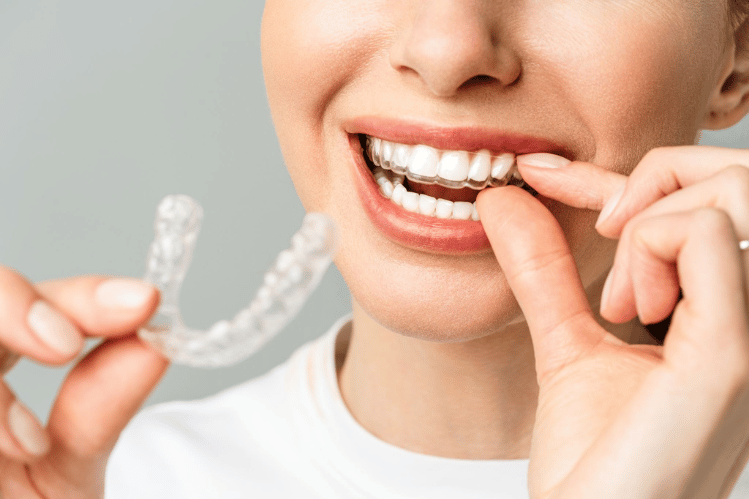Legacy Orthodontics Things To Know Before You Buy
Legacy Orthodontics Things To Know Before You Buy
Blog Article
The Best Strategy To Use For Legacy Orthodontics
Table of ContentsIndicators on Legacy Orthodontics You Should KnowA Biased View of Legacy OrthodonticsHow Legacy Orthodontics can Save You Time, Stress, and Money.Legacy Orthodontics for BeginnersThe 10-Minute Rule for Legacy Orthodontics
In addition, we offer adjustable treatment routines, versatile repayment choices and an enjoyable, enjoyable experience.An orthodontist is a dental professional educated to diagnose, stop, and deal with teeth and jaw irregularities. Orthodontists function with individuals of all ages, from youngsters to adults.
Malocclusion, or misaligned teeth, can lead to dental concerns, consisting of tooth degeneration, gum tissue illness, and tough or painful chewing. Not everyone is born with straight teeth. If you have a bad bite or huge rooms between your teeth, you might wish to seek advice from a dental professional concentrating on orthodontic care.
Legacy Orthodontics for Beginners
( Image Credit Rating: DigitalVision/Getty Images) Orthodontists utilize fixed and detachable dental tools, like dental braces, retainers, and bands, to alter the position of teeth in your mouth. Orthodontic treatment is for dental irregularities, including: Misaligned teethBite problems, like an overbite or an underbiteCrowded teeth or teeth that are too far apartJaw misalignmentThe goal of orthodontic treatment is to boost your bite.
A healthy bite ensures you can consume, eat, and talk correctly. While you could consider orthodontists as generally for youngsters or teens that need dental braces, they can remedy oral problems at any age. Orthodontists attend college, dental institution, and orthodontic college. After college graduation, they invest 2 or 3 years in an orthodontic residency program.
All orthodontists are dental professionals, however not all dentists are orthodontists. Orthodontic residency programs offer intensive, focused instruction for dental professionals. They focus on 2 locations: Just how to appropriately and securely relocate teeth How to correctly direct advancement in the teeth, jaw, and faceOnce an orthodontist has finished training, they have the alternative to come to be board certified.
Legacy Orthodontics Fundamentals Explained
Misalignment, or malocclusion, is one of the most usual reason individuals see an orthodontist. It is hereditary and is the outcome of size distinctions between the top and reduced jaw or in between the jaw and teeth. Malocclusion leads to tooth overcrowding, an askew jaw, or irregular bite patterns. Malocclusion is generally treated with: Your orthodontist attaches metal, ceramic, or plastic square bonds to your teeth.
If you have just minor malocclusion, you may be able to utilize clear braces, called aligners, rather than typical braces (https://sitereport.netcraft.com/?url=https://www.legacyortho.com). Some individuals need a headgear to assist relocate teeth right into line with stress from outside the mouth. After dental braces or aligners, you'll require to use a retainer. A retainer is a personalized device that maintains your teeth in location.
They can create added room in the mouth without having to pull teeth. Orthodontists use wires, medical screws, or plates to sustain your jaw bone.
You may need to see an orthodontist if you have: Crowding or not enough area for every one of your teethOverbite, when your top teeth come by your bottom teethUnderbite, when your base teeth are as well much forwardSpacing or issues with gapsCrossbite, which is when your top teeth fit behind your base teeth when your mouth is closedOpen bite or a vertical space in between your front base and upper teethMisplaced midline, when the center of your bottom and top teeth do not line up Fixing a dental malocclusion can: Make attacking, chewing, and speaking easierImprove the proportion of our face and your total appearanceEase pain from temporomandibular joint disordersDifferent your teeth and make them less complicated to clean up, helping avoid tooth decay or tooth cavities It's commonly a dentist who initially notices misaligned teeth during a regular exam.
Facts About Legacy Orthodontics Uncovered

During your first orthodontic consultation, you'll likely have: A dental examPhotos taken of your face and smileDental X-raysPanoramic (360 degree) X-rays of your face and headImpressions to create molds of your teethThese examinations will certainly help your orthodontist recognize how to continue with click over here now your treatment. orthodontics. An orthodontist is a dental practitioner who's had training to treat your teeth and jaw
An orthodontist is focused on your bite, so something like a damaged tooth would be taken care of by a dental professional. Orthodontists are concentrated on your bite, or the way your teeth fit with each other, and the straightness of your teeth.
Ever before asked yourself just how celebs constantly appear to have completely lined up teeth? Orthodontists are dental experts who focus on fixing irregularities in the teeth and jaws.
Everything about Legacy Orthodontics

While dental braces are the most generally recognized orthodontic therapy, orthodontists have a varied toolkit at their disposal. The particular technique chosen depends upon the extent of the case, the individual's age, and individual preferences. These reliable dental braces utilize a system of brackets bound to the teeth and connected by cords.
Clear aligners, like Invisalign, are a popular option for individuals looking for a much more very discreet therapy alternative. These detachable trays are tailor-made to gradually move the teeth's placement. Headwear may be used combined with dental braces or aligners to use additional targeted pressures, particularly for correcting jaw discrepancies. In situations of narrow jaws, palatal expanders can be utilized to produce room for correct tooth placement.
Report this page